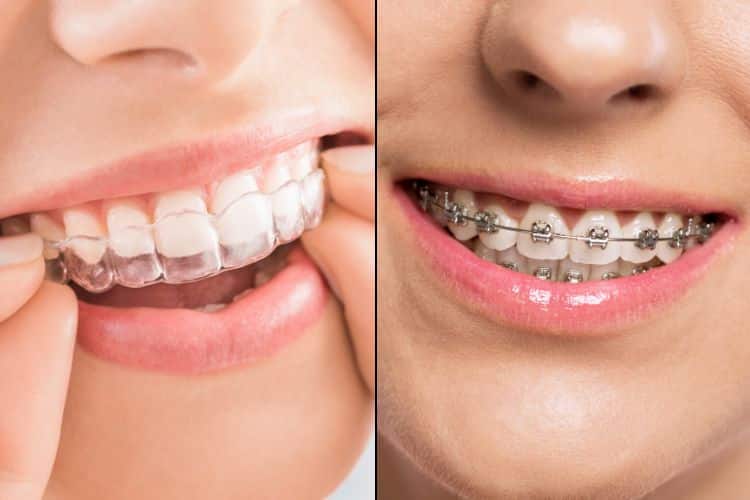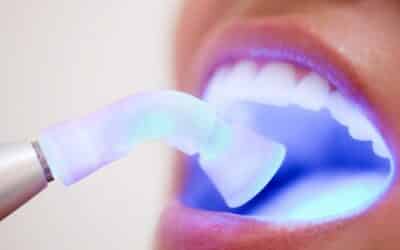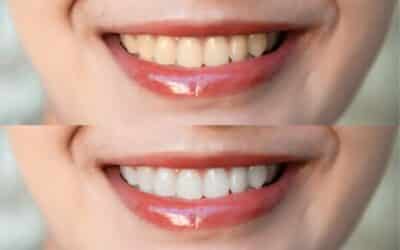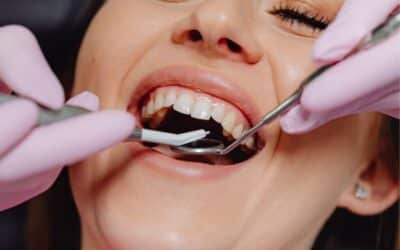When it comes to straightening teeth and improving dental alignment, patients today have more options than ever before. Traditional metal braces have been the primary method for correcting misaligned teeth for decades, but Invisalign has emerged as a modern, discreet alternative. While both treatments are effective, they differ in many aspects, including comfort, aesthetics, treatment time, and cost. Understanding these differences can help patients make an informed decision about which orthodontic option best suits their needs.
Effectiveness: Which Option Works Better?
Both Invisalign and traditional braces are effective at straightening teeth, but their suitability depends on the complexity of the dental issue. Traditional braces use metal brackets and wires to apply continuous pressure, gradually shifting teeth into proper alignment. They are particularly effective for severe misalignments, significant bite problems, rotated teeth, and cases requiring major adjustments. Because braces remain fixed on the teeth, they provide constant correction without relying on patient compliance.
Invisalign, on the other hand, uses a series of clear plastic aligners that are custom-made for each patient. These aligners are best suited for mild to moderate cases of misalignment, minor bite issues, and gaps between teeth. Invisalign is effective for many orthodontic concerns, but it may not be the best choice for patients with severe crowding or complex bite problems. Since the aligners are removable, patient compliance is crucial. If they are not worn for the recommended 20 to 22 hours per day, treatment may take longer or become less effective.
Comfort: Which Treatment Feels Better?
Comfort is one of the key differences between Invisalign and traditional braces. Braces consist of metal brackets and wires, which can cause irritation to the lips, cheeks, and gums. Adjustments are necessary every few weeks to tighten the wires, which can lead to temporary soreness and discomfort. Patients may also experience minor cuts or ulcers in their mouths as they adjust to wearing braces.
In contrast, Invisalign aligners are made from smooth, BPA-free plastic, making them more comfortable to wear. Since they lack metal components, there is no risk of irritation from sharp edges. While patients may still experience some discomfort when switching to a new set of aligners, this is generally milder than the pain associated with braces adjustments. Invisalign allows for a more comfortable experience overall, but the aligners can feel slightly tight, especially during the first few days of each new stage of treatment.
Appearance: How Do They Affect Your Smile During Treatment?
For many patients, especially adults and teenagers, appearance is a major factor when choosing between Invisalign and traditional braces. Braces are highly visible due to their metal brackets and wires, which can make some people feel self-conscious about their smile. While ceramic braces provide a less noticeable alternative, they are still more visible than Invisalign.
Invisalign is designed to be discreet. The clear aligners are virtually invisible when worn, making them an attractive option for individuals who want to straighten their teeth without drawing attention. Because they are removable, Invisalign also allows patients to take them out for important events, photos, or social gatherings. This aesthetic advantage makes Invisalign the preferred choice for many adults and professionals who do not want the appearance of metal braces.
Convenience: Which Option Fits Your Lifestyle Better?
The level of convenience varies between Invisalign and traditional braces. Braces are permanently fixed to the teeth, meaning patients do not have to worry about removing them or keeping track of aligners. However, they do come with dietary restrictions. Patients must avoid hard, sticky, or chewy foods that can damage the brackets and wires. Maintaining oral hygiene is also more challenging, as braces make it difficult to floss and clean around the brackets effectively.
Invisalign offers more flexibility because the aligners are removable. Patients can eat whatever they like without worrying about damaging their orthodontic appliances. Cleaning is also much easier, as brushing and flossing can be done as usual. However, because Invisalign requires patients to wear the aligners for most of the day, it demands more discipline. Forgetting to wear them or frequently removing them can slow progress and extend treatment time. Patients must also clean their aligners regularly to prevent staining and bacterial buildup.
Treatment Time: Which One Works Faster?
The duration of orthodontic treatment depends on the severity of the case and how well the patient follows their dentist’s instructions. Traditional braces generally take anywhere from 18 months to 3 years to achieve full results. Because they are constantly in place, they work around the clock to correct alignment issues.
Invisalign treatment typically lasts between 12 and 18 months, making it a faster option for many patients. However, this is only true when the aligners are worn as directed. If they are not worn for at least 20 hours per day, treatment can take significantly longer. While Invisalign may work more quickly for mild to moderate cases, traditional braces remain the best choice for severe misalignments that require more intensive correction.
Cost: Which Treatment Is More Affordable?
The cost of orthodontic treatment varies based on the complexity of the case, location, and the specific orthodontist’s fees. Traditional braces generally cost between $3,000 and $7,000, with many dental insurance plans covering a portion of the cost. Metal braces tend to be the most affordable option, while ceramic braces, which are less noticeable, can be slightly more expensive.
Invisalign treatment typically costs between $3,500 and $8,500, making it a bit pricier than traditional braces in most cases. While some insurance plans cover Invisalign, the amount of coverage varies. Additionally, because Invisalign aligners can be lost or damaged, patients may incur extra costs for replacements. Despite the higher price, many patients find Invisalign’s convenience and discreet appearance worth the additional expense.
Maintenance and Oral Hygiene: Which One Is Easier to Care For?
Maintaining good oral hygiene is essential during orthodontic treatment, but the process differs between Invisalign and braces. With traditional braces, food particles can become trapped around the brackets and wires, making cleaning more challenging. Patients must use special floss threaders or water flossers to clean between teeth and around braces. Neglecting oral hygiene can lead to plaque buildup, cavities, and gum disease.
Invisalign makes oral hygiene much simpler since the aligners are removable. Patients can brush and floss their teeth normally without any obstructions. However, the aligners themselves must be cleaned regularly to prevent discoloration and bacteria buildup. This requires rinsing, brushing, and soaking the aligners as recommended by the dentist.
Which Option Is Right for You?
Choosing between Invisalign and traditional braces depends on your specific dental needs, lifestyle, and personal preferences. Traditional braces are often the best choice for complex cases that require significant realignment, while Invisalign is ideal for patients who prefer a more discreet and comfortable treatment.
Patients who struggle with discipline may find traditional braces easier, as they do not require removal and re-insertion throughout the day. Conversely, those who prioritize aesthetics and convenience may find Invisalign to be the better option, provided they can commit to wearing the aligners consistently. Consulting with an experienced orthodontist can help determine which treatment is best suited to your individual needs.
Conclusion
Both Invisalign and traditional braces are effective methods for straightening teeth and improving dental alignment. Traditional braces are ideal for complex cases, while Invisalign offers a more aesthetically pleasing and convenient option for mild to moderate corrections. Ultimately, the right choice depends on your unique dental concerns and lifestyle preferences.
If you are considering orthodontic treatment and need expert advice, Dental Implants Orange County offers professional consultations to help you choose the best solution for your smile. Contact us today to learn more about Invisalign and traditional braces, and take the first step toward achieving a healthier, more confident smile!




